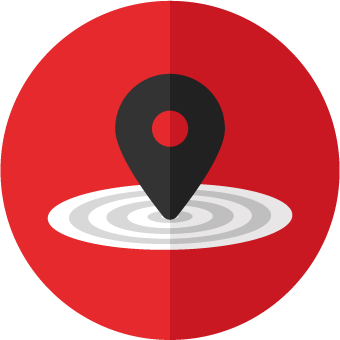Search engine optimization (SEO) is a cost-effective digital marketing strategy for businesses of all shapes and sizes. When done right, SEO improves the rank of websites, business listings, and other online assets in relevant search results, increasing visibility and traffic to ultimately drive business.
Although SEO has the potential to provide a very high return on investment, especially compared to other strategies like paid advertising, it's a big, often complicated area of digital marketing that can be daunting to jump into.
By understanding what the different types of SEO are and how they should (or in some cases shouldn't) be used to drive your digital marketing strategy forward, you can more easily determine the best type of SEO to put your resources into.
The 7 Most Important Types of SEO To Understand:
- Organic SEO
- Local SEO
- On-Page SEO (or On-Site SEO)
- Off-Page SEO (or Off-Site SEO)
- Technical SEO
- White Hat SEO
- Black Hat SEO
1. Organic SEO
 Organic SEO is the biggest type of search engine optimization — it's really just a blanket term that's often used to refer broadly to SEO as a whole and distinguish it from more specific types of SEO.
Organic SEO is the biggest type of search engine optimization — it's really just a blanket term that's often used to refer broadly to SEO as a whole and distinguish it from more specific types of SEO.
SEO is an organic digital marketing strategy because it focuses on increasing online exposure and engaging potential customers organically, meaning it doesn't involve paying for anything like impressions, clicks, or leads.
Instead, organic SEO focuses on employing "free" strategies and tactics (of course, you still have to pay whoever's doing SEO for you) to improve your ranking in relevant search results.
2. Local SEO
 Local SEO is a subtype of organic SEO that focuses only on improving rankings in local search results, or search results in specific geographic areas.
Local SEO is a subtype of organic SEO that focuses only on improving rankings in local search results, or search results in specific geographic areas.
This type of SEO is heavily used by small and medium-sized businesses (SMBs), including brick-and-mortar and service-area businesses (SABs), as well as multi-location businesses, such as franchises and chains.
Because Google and Google Maps are the top places that people search for local businesses and "near-me" solutions, local SEO efforts are heavily skewed towards optimizing Google Business Profile (GBP).
The top three pages that appear in local search results are usually GBP listings (Google's 3-Pack), so optimizing your GBP first provides the best chance of appearing at the top of Google.
However, there are many local SEO best practices that can also be used to help boost the ranking of websites in local search results.
3. On-Page SEO (or On-Site SEO)
 On-page SEO refers to the practice of optimizing individual web pages to rank higher and earn more relevant traffic in search engines. This involves optimizing both the content and the HTML source code of a page.
On-page SEO refers to the practice of optimizing individual web pages to rank higher and earn more relevant traffic in search engines. This involves optimizing both the content and the HTML source code of a page.
Examples of on-site SEO tactics include things like keyword, URL, title tag, meta description, heading, content, and image optimization.
4. Off-Page SEO (or Off-Site SEO)
 As you may have already guessed, off-page SEO is the opposite of on-page SEO. It encompasses all the actions taken outside of your own website to impact your rankings within search engine results pages (SERPs).
As you may have already guessed, off-page SEO is the opposite of on-page SEO. It encompasses all the actions taken outside of your own website to impact your rankings within search engine results pages (SERPs).
Off-site SEO involves various activities done on other websites to improve your website's ranking, such as building backlinks (links from other websites to your site), getting reviews, and increasing the overall popularity, trustworthiness, and authority of your site.
5. Technical SEO
 Technical SEO involves making improvements to various technical aspects of your website to enhance its visibility and accessibility to search engines, ultimately helping them crawl and index it more efficiently.
Technical SEO involves making improvements to various technical aspects of your website to enhance its visibility and accessibility to search engines, ultimately helping them crawl and index it more efficiently.
Unlike on-page and off-page SEO, which focus on things like content and links, technical SEO deals with the infrastructure of your site. Improving page speeds, ensuring mobile-friendliness, fixing technical site errors, and creating a site map are all important parts of technical SEO.
6. White Hat SEO
 White hat SEO is the "good" type of SEO — the type that only uses ethical and legitimate strategies and techniques to improve search engine rankings. These tactics are in line with the terms and guidelines set forth by search engines, particularly Google.
White hat SEO is the "good" type of SEO — the type that only uses ethical and legitimate strategies and techniques to improve search engine rankings. These tactics are in line with the terms and guidelines set forth by search engines, particularly Google.
White hat SEO focuses on providing value to users and creating high-quality content, rather than exploiting loopholes or using deceptive practices to manipulate search engine algorithms.
7. Black Hat SEO
 Black hat SEO relies on unethical and manipulative tactics to improve search engine rankings. These tactics violate search engine guidelines and can result in penalties or bans from search engines.
Black hat SEO relies on unethical and manipulative tactics to improve search engine rankings. These tactics violate search engine guidelines and can result in penalties or bans from search engines.
Black hat SEO focuses on exploiting loopholes in search engine algorithms to achieve quick and often short-lived results. It's never recommended to employ black hat SEO techniques, so if anyone ever offers you shady SEO services, you should run the other way.
Are There Any Other Types of SEO?
SEO is such a complex area of digital marketing that each of the types of SEO we mentioned above can be broken down even further into other subtypes. Here are a few examples:
International SEO
 International SEO is a term that refers to the process of optimizing your website to rank better in SERPs for a global audience. It involves implementing strategies and tactics to attract organic traffic from different countries and populations who speak different languages.
International SEO is a term that refers to the process of optimizing your website to rank better in SERPs for a global audience. It involves implementing strategies and tactics to attract organic traffic from different countries and populations who speak different languages.
International search engine optimization tactics include things like writing content in multiple languages and having different website URLs for different countries.
Mobile SEO
 Mobile search engine optimization is the process of optimizing your website for mobile devices, such as smartphones and tablets, to improve its visibility and ranking in mobile search results.
Mobile search engine optimization is the process of optimizing your website for mobile devices, such as smartphones and tablets, to improve its visibility and ranking in mobile search results.
With the increasing use of mobile devices for browsing the internet, mobile SEO has become crucial for ensuring a positive user experience and maintaining high search engine rankings.
Ecommerce SEO
 Ecommerce SEO tactics involve optimizing an online store's website to improve its visibility and ranking in search engine results pages for relevant keywords.
Ecommerce SEO tactics involve optimizing an online store's website to improve its visibility and ranking in search engine results pages for relevant keywords.
Ecommerce search engine optimization is crucial for online retailers looking to attract more organic traffic, increase sales, and grow their business.
Content SEO
 Content SEO is an important part of on-page SEO and content marketing that deals specifically with the optimization of a page's content, including its keywords, headings, URL, and metadata.
Content SEO is an important part of on-page SEO and content marketing that deals specifically with the optimization of a page's content, including its keywords, headings, URL, and metadata.
Content can always be tweaked and improved to make it more relevant to ever-changing search engine algorithms and user queries.
Video & Image SEO
 Video and image SEO are another part of on-page search engine optimization, specifically the optimization of video and image content.
Video and image SEO are another part of on-page search engine optimization, specifically the optimization of video and image content.
While videos and images can enhance the user experience and engagement on a website, they also need to be optimized to ensure they are discoverable by search engines. This usually means optimizing things like image/video size and quality, file names, and alt text.
Voice SEO
 Voice SEO, also known as voice search optimization, refers to the process of optimizing your website and content to improve its visibility and ranking specifically in voice search results.
Voice SEO, also known as voice search optimization, refers to the process of optimizing your website and content to improve its visibility and ranking specifically in voice search results.
With the increasing popularity of voice-activated devices, like smart speakers and virtual assistants (e.g., Amazon Alexa, Google Assistant, Siri), optimizing for voice search has become increasingly important.a
Key aspects of voice SEO include things like optimizing content for long-tail and natural language keywords, including specific questions and phrases that people actually ask their voice search devices.
What Type of SEO Should You Do?
The bottom line is that every business should be doing SOME type of SEO, but the best type of SEO for your business is highly dependent on several factors, especially your industry and goals.
Businesses that aren't strictly location-dependent, such as ecommerce businesses, will likely want to employ a broader organic SEO strategy that incorporates tactics like ecommerce SEO and potentially even international SEO.
For local, location-dependent businesses, like restaurants, retailers, service providers, and other types of brick-and-mortars and SABs, local SEO is definitely the best type of SEO, as it allows you to compete directly in the local market for the top positions on Google and Google Maps (and smaller listing platforms, including Apple Maps).
If local SEO falls anywhere into your overall SEO strategy, you should definitely give Local Falcon a try to track your ranking in local search results, get AI-powered competitor analysis and business listing optimization recommendations, and much more!

